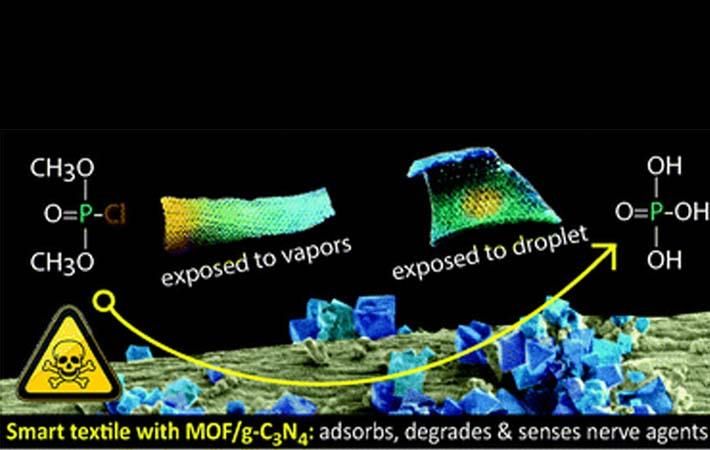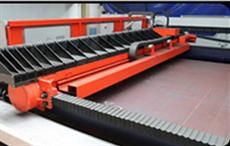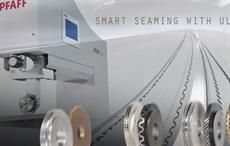Scientists at the City College of New York have developed smart textiles with the ability to rapidly detect and neutralise nerve gas. The development has come from the lab of chemical engineer and Fulbright Scholar Teresa J Bandosz. The fabric consists of a cotton support modified with Cu-BTC MOF/oxidised graphitic carbon nitride composites.
The latter were developed in the lab previously and tested as nerve agent detoxification media and colorimetric detectors.Scientists at the City College of New York have developed smart textiles with the ability to rapidly detect and neutralise nerve gas. The development has come from the lab of chemical engineer and Fulbright Scholar Teresa J Bandosz. The fabric consists of a cotton support modified with Cu-BTC MOF/oxidised graphitic carbon nitride composites.#
Combining Cu-BTC and g-C3N4-ox resulted in a nanocomposite (MOFgCNox) of heterogeneous porosity and chemistry. Upon the deposition of MOFgCNox onto cotton textiles, a stable fabric with supreme photocatalytic detoxification ability towards the nerve gas surrogate, dimethyl chlorophosphate, was obtained.
The detoxification process was accompanied by a visible and gradual colour change, which Bandosz said can be used for the selective detection of chemical warfare agents and for monitoring their penetration inside a protective layer.
"These smart textiles adsorbed almost 7g of CWA surrogate/its detoxification products per gram of Cu. The superior performance was linked to the high dispersion of the MOF crystals on the fibres, and a specific texture promoting the availability of the active copper centres," said Bandosz, who is seeking funding for additional research.
The study appears in the journal Nanoscale Horizons. Bandosz received a 2016-2017 Fulbright Senior Scholar Award for her pioneering work. She did research at the University of Malaga in Spain to help alleviate global warming and solve energy problems. (SV)
Fibre2Fashion News Desk – India


